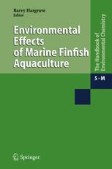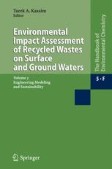Search
Search Results
-
Human Physical Stresses at Normal and Abnormal Cabin Pressures
Atmospheric pressure is reduced as a function of altitude, thus making hypoxia, the condition of oxygen deficiency, a concern for aviation. The...
-
Occupational and Public Health Risks
Symptoms reported by passengers and crewmembers on commercial aircraft are described according to individual air quality-related sources,...
-
Assessing Nitrogen Carrying Capacity for Blue Hill Bay, Maine: A Management Case History
As net-pen aquaculture in coastal waters grows, regulatory agencies must consider the potential for localized eutrophication. To avoid excessive...
-
Organic Chemicals in Groundwater: Modeling Fate and Transport
Hazardous organic chemical waste that has been placed in landfills or recycled for use as highway construction and repair materials has the potential...
-
Aircraft Cabin Air Quality Trends Relative to Ground Level Standards
Aircraft cabin air quality has attracted much attention, summarized recently by a detailed examination and commentary by a U.S. National Academy of...
-
Beneficial Reuses of Scrap Tires in Hydraulic Engineering
Scrap tires are a high-profile waste material. There are serious concerns over the ever-mounting scrap tire problem. A need exists for increasing...
-
Nonaqueous Phase Liquid Pool Dissolution in Subsurface Formations
The objective of this chapter is to present some recent developments on nonaqueous phase liquid (NAPL) pool dissolution in water saturated subsurface...
-
Mathematical Methods for Hydrologic Inversion: The Case of Pollution Source Identification
The reliable assessment of hazards or risks arising from groundwater contamination problems and the design of efficient and effective techniques to...
-
The Suitability of Electrode Measurements for Assessment of Benthic Organic Impact and Their use in a Management System for Marine Fish Farms
A management system for marine fish farms in Norway has recommended the use of simple electrode measurements of redox potentials (E...
-
Pesticides in the Great Lakes
Pesticides have been widely and heavily used in agriculture in the Great Lakes Basin (approximately 93000 tons were used in 1995 alone). Herbicides...
-
Early Warning Strategies and Practices Along the River Rhine
In 1986, the International Commission for the Protection of the Rhine (ICPR) installed a Warning and Alarm Plan (WAP) in order to avert the dangers...
-
Degradation and Preservation of Organic Matter in Marine Sediments
Organic matter that is deposited in aquatic sediments is subject to an intense diagenetic reactor that determines how much organic carbon is...
-
Present Status of Antifouling Systems in Japan: Tributyltin Substitutes in Japan
An international conference held by the International Maritime Organization in October 2001 adopted an “International convention on the control of...
-
Assessment of Organic Compounds in the Rhine Estuary
Over the past centuries the Rhine estuary has changed from a natural, hardly disturbed estuary into an anthropogenetically influenced area that...
-
New Trends in Sample Preparation Methods for the Determination of Organotin Compounds in Marine Matrices
Tributyltin still remains a major issue for the marine environment and its determination is mandatory by legislation in several countries. As for...
-
Water Quality of Lake Constance
Lake Constance is used as a drinking water reservoir for about 5 million people. Because of its glacial origin from the Alps, the amount of...
-
Hydrology
The River Rhine is one of the major rivers of Europe -#8211; the only river that connects the Alps with the North Sea. It flows 1320 km from two...
-
Natural and Artificial Radioactivity in the Rhine and Its Tributaries
Presently, natural and artificial radioactivity in the Rhine River does not present a radiological hazard to the population. On the contrary, the...
-
Brominated Flame Retardants in the Great Lakes
Brominated flame retardants in the Great Lakes have not been as well studied as many of the polychlorinated pollutants, especially PCBs, but in the...
-
Development, Occurrence and Regulationof Antifouling Paint Biocides: Historical Review and Future Trends
Antifouling agents have been used on ships since the ancient Roman and Greek civilizations. A brief history is provided through to the demise of...
